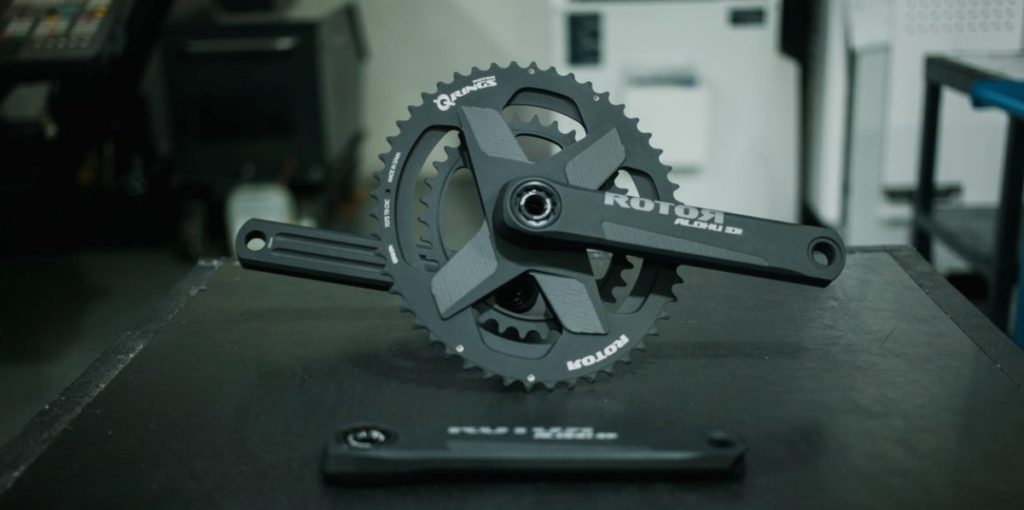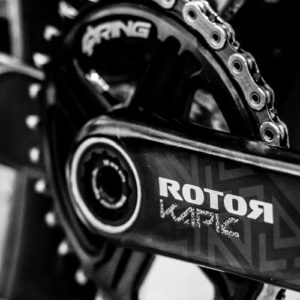No products in the cart.
Return To ShopComfort is defined as the ability to sustain your position for the duration of your ride. Power is ability to apply force to the pedals without restriction within a range of accepted biomechanical norms. Aerodynamics are achieved by optimizing front surface area and shape to minimize resistive forces of air.
Most likely, crank length has just been ignored for generations and over time has just become accepted even though there is no basis for the current standard with th bicycles riden today.
There has been a lot of great research at ROTOR on the topic of crank length. During the initial study, when you look at max power there was no difference between 145mm to 195mm crank lengths, but there was significant less oxygen (O2) uptake with the shorter cranks.
An easier way to think of this would be would be if you took two riders and placed them on the track. One in the inside lane (we can call this the 145mm crank) and one in the outside lane (the 195mm crank) and both riders had to run 1 lap (revolution) in 1 minute 30 seconds. The rider in the outside lane has a greater distance to cover and would have to run at a faster rate than the athlete in the inside lane to both complete one revolution of the track. This would be the same as an rider pedaling a 145mm and 195mm crank at 90rpm. With the 195mm crank length, the foot speed is higher to cover the revolution at 90rpm compared to the 145mm crank length.
Most report that when riders switch to a shorter crank, that their cadence increases. That means increase in cadence when moving to a shorter crank length isn’t due to trying to make up for the lack of leverage, but to replicate the foot rate/speed a rider is accustomed to on a longer crank and to use the extra available O2, which is minimal.

So how to determinate which length is best?
Due to tradition and general availability, we don’t accept shorter crank lengths than 150 mm as options even though science would support that it would not impact their power output or efficiency. But, shorter crank lengths could make riders faster on a bike. Crank length can be used as a tool to improve fit related issues impacting comfort, power, and aerodynamics.
Using shorter crank can improve:
- Comfort: A shorter crank length reduces range of motion at the knee (extension and flexion), hips, and low back.
- Power: A shorter crank alone will not increase your power output, but it can be used to reduce restriction through the top of the pedal stroke by opening up an impinged hip angle and/or reducing knee flexion. Going back to our definition, if we reduce restriction than power output can increase.
- Aerodynamics: Going to a shorter crank will allow you to ride at a lower back angle which minimizes frontal surface area improving aerodynamics.







